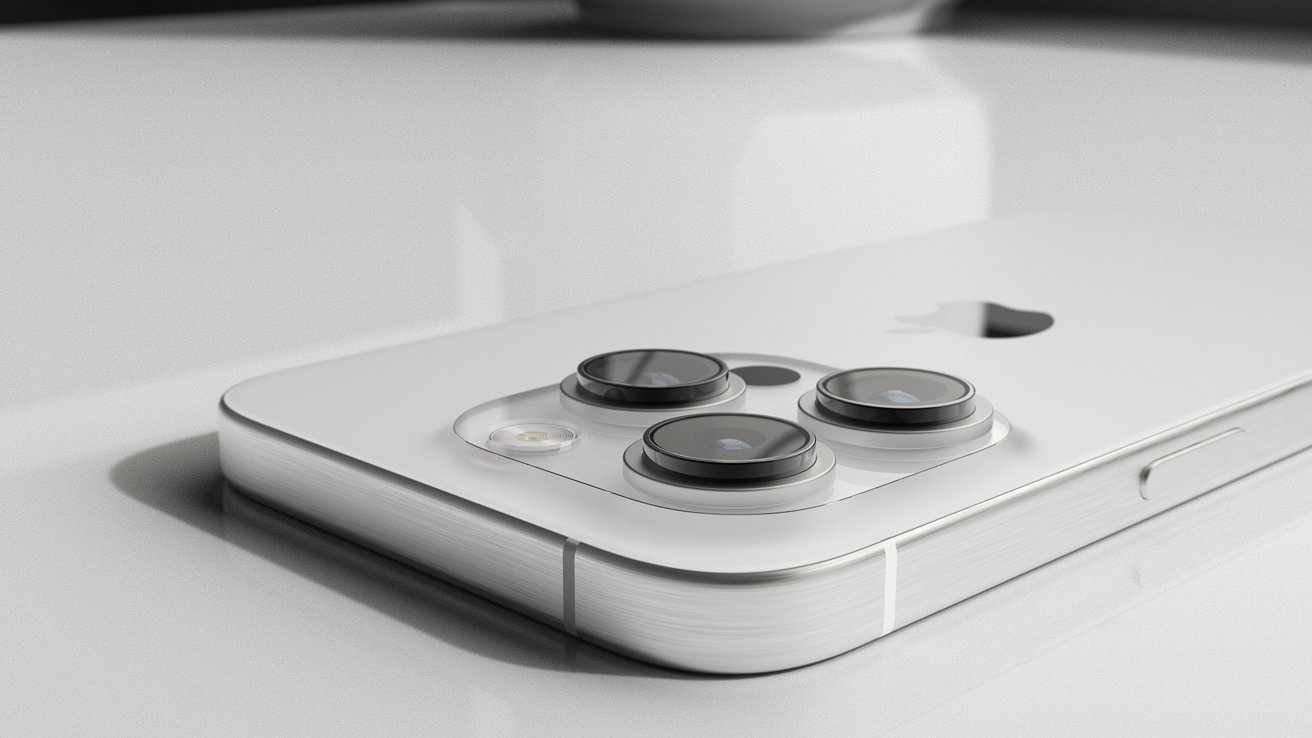iPhone 16 Pro could get thinner, lighter camera lenses that improve optical zoom
A supply chain report suggests that the iPhone 16 Pro could use molded glass lenses to reduce camera bump thickness and weight while increasing magnification distance.

iPhone 16 Pro could have molded lenses
Previous reports have already suggested the iPhone 16 Pro could get the 120 mm Telephoto camera thanks to the rumored larger device size. Molded glass could help with this implementation due to its thinner and lighter nature.
According to a report from Economic Daily News, suppliers are already gearing up for the 2024 iPhone lineup. The iPhone 16 Pro and iPhone 16 Pro Max could utilize molded glass lenses to save space and weight.
Molded lenses also provide greater magnification for their given size, so Apple could choose to keep the 24 mm and 120 mm focal lengths while using much thinner lenses. This would especially help with space saving on the smaller iPhone 16 Pro, which will already be overstuffed with the tetraprism crystal for the longer Telephoto lens.
Since the iPhone 16 Pro will have plenty of space, Apple could take one of two routes. It could reduce the size and weight of the camera bump while maintaining existing focal lengths or choose to extend its 120 mm focal length even more.
Due to the complexity of developing molded lenses, manufacturers are already preparing for the iPhone 16 Pro lineup. Apple dominates supply chain orders, but other manufacturers may also attempt to implement molded lenses as part of a greater trend.
Read on AppleInsider

Comments
You made a similar comment on my iPhone 15 Pro Max review, so I wanted to clear that up.
Also, I don't believe the Main Camera has to carry the range between 1x and 5x. It's pretty clear that it handles 1x to 2x as the Camera app shows. Then you skip from 2x to 5x. For my uses, that's just fine and desirable. I get way more use out of an optically superior 5x lens versus the previous 3x lens. The 2x crop is enough for that range.
My most used focal lengths so far this generation are 35 mm and 120 mm.
iPhone 16 Pro could get thinner, lighter camera lenses that improve optical zoom
but the cameras are really getting good. I want them to continue on that path. If they add another millimeter to the camera bump, then great, if it helps. Moulded glass lenses will help because, while there’s nothing special about them, other than optical glass can have greater refractive indices than the plastic lenses often used, they can be made in shapes that ground lenses can’t, because ground elements are ground on a machine that has elements on the surface of a spherical surface, the diameter of which duplicates the surface curvature of the element, one side of the element at a time. So obviously the greater the curve the smaller the sphere and so the fewer elements that can be ground and polished at once. That drives cost up dramatically, which is one reason top lenses cost so much. Aspherical elements can only be ground and polished one at a time, so mostly they’ve been molded for quite some time.
so if it’s true that we’ll “see” moulded optical glass elements next year, it’s pretty exciting. If they can stuff another element in there as a result of the thinner elements, that opens up possibilities. With periscope lenses, there is no reason why true optical zooms can’t happen. With more elements packed together, it’s more likely.
but a good 30 years ago, Phillips showed an element that changed its curvature with small electrical currents. Our eyes changes focus by muscles pulling and pushing on the lens. If someone could perfect that, we could have much better lenses.